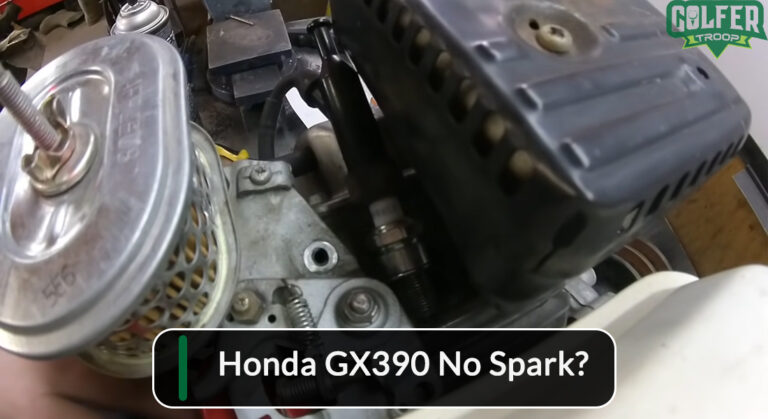Electric Golf Cart Hesitates When Accelerating: How to Fix?
An electric golf cart is a compact, motorized vehicle that was created to make it easier for golfers to move around a golf course. However, this cart may cause several issues in addition to its benefits. The most frequent problem is that an electric golf cart hesitates when accelerating. But this issue may be resolved in several ways.
The primary stage in fixing an electric golf cart that hesitates when accelerating is to deal with the faulty or dirty carburetor, malfunctioning speed controller, damaged battery, or other potential problems.
However, to overcome these issues, you must adhere to a few rules. Every potential reason for your cart hesitation problems has been explored in this article, along with solutions to help you.
Why does my electric golf cart hesitates when accelerating?
There might be several reasons why an electric golf cart hesitates. Such as loose connections, damaged battery or solenoid, faulty ignition or direction switch, etc.
However, it is difficult to determine which components are the major cause of this problem before the inspection.
So, you must extensively examine all potential electrical systems to identify the root source of this problem. Read the section below to determine the specific reasons for this problem.
Faulty Solenoid
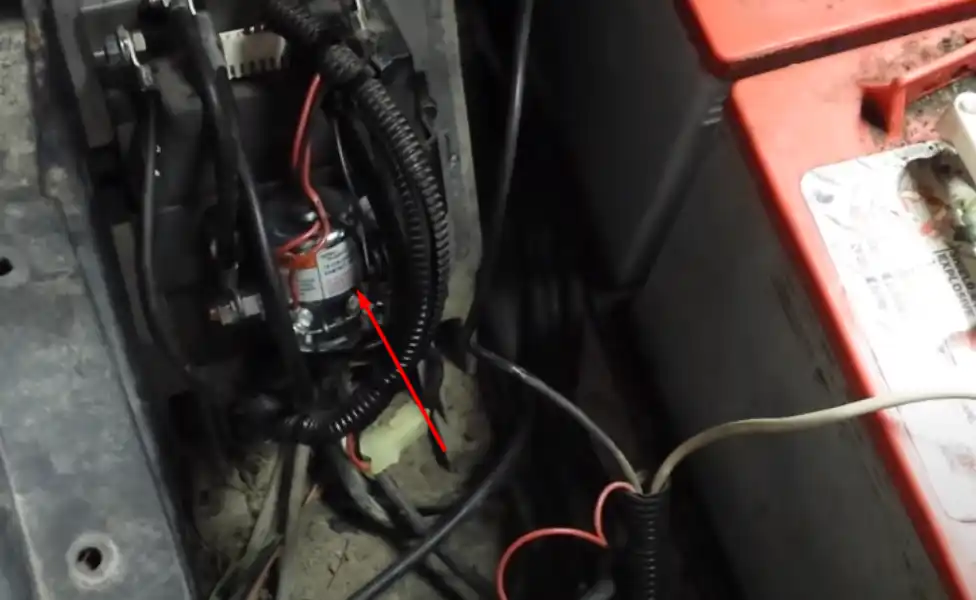
The solenoid is a little device you will find above the engine’s starter, and your cart won’t accelerate smoothly or hesitate when the solenoid does not work correctly.
The most obvious symptom of a failing solenoid is when your golf cart won’t start after turning on the switch.
When the ignition system functions normally, the solenoid will make a small clicking sound, but a faulty solenoid won’t make it.
Damaged Battery
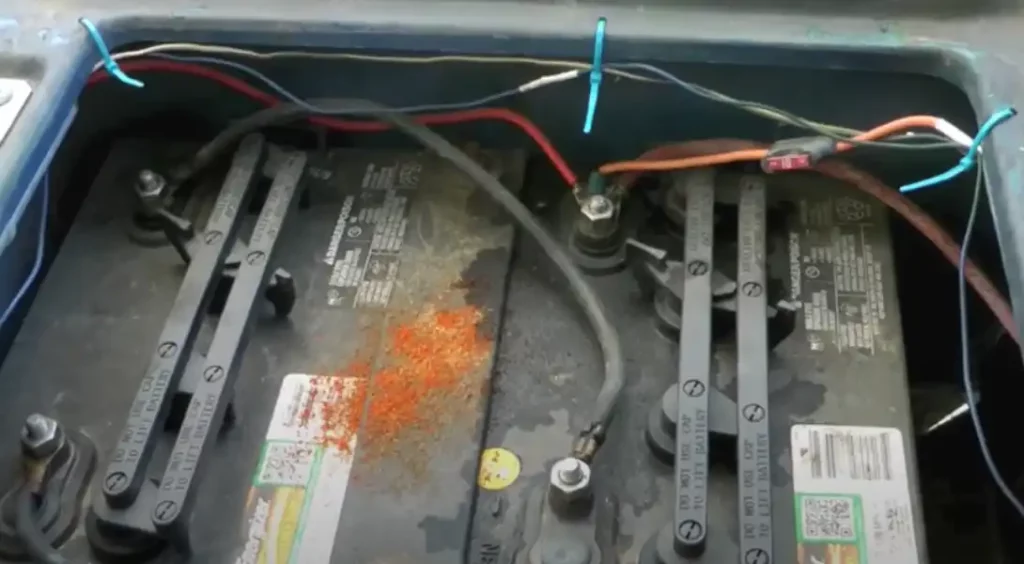
If your golf cart is equipped with a strong battery, you can accelerate the cart without any hesitation.
However, batteries that are beginning to lose their power may hesitate when accelerating the cart because almost all of the cart’s power comes from the battery.
Low Voltage
The most frequent cause of slowing down and hesitating when accelerating in golf carts is low-voltage batteries.
Loose or Faulty Connections
The controller may occasionally act abnormally and hesitate when accelerating due to loose wiring. This is because the current cannot flow through it correctly due to broken or loose cables and connections.
Because of this, the accelerator controller struggles to receive enough current to function properly, which results in a hesitation problem.
Malfunctioning Ignition Switch
The ignition switch is essential for a golf cart to start and run as smoothly as possible. However, there will be a few problems, like hesitating when accelerating, that might arise with an ignition system that prevents your cart from starting.
Malfunctioning F/R Direction Switch
There may be an issue with your direction switch if your golf cart hesitates when accelerating and moves improperly forward and backward. This problem will mostly be caused by overheating and extended use without proper maintenance.
Malfunctioning Speed Controller
A speed controller is an essential component of an electric golf cart. This aids in maintaining control over several motor operations, such as roll-away safety and regenerative braking.
These components also regulate the golf cart’s acceleration and maximum speed, so the accelerator will hesitate when they malfunction.
How to fix an electric golf cart that hesitates when accelerating?
Golf carts occasionally produce serious problems, such as hesitation when accelerating. This condition is not only dangerous, but it also raises some major issues.
Therefore, it’s essential to investigate and address this issue as soon as you discover them if you would like your cart to function for several years in excellent condition.
We will discuss solutions in this section for the hesitation problem that you are facing in your golf cart.
Fix Faulty Solenoid
Use a voltmeter and set it in ohms mode to inspect the solenoid. If your solenoids are in working order, the ohm reading should be zero, but if the solenoid is jammed, it will not show zero. Here, you will need to replace it to fix the problem.
It is necessary to match the replacement one’s type and year model to the old one before installing a new one. Otherwise, it won’t operate correctly. Take the following actions to replace the defective solenoid:
- Step 1: To begin with, identify the problematic solenoid and unplug it from the battery along with the controller.
- Step 2: Remove the screws, detach the connections, and take out the solenoid.
- Step 3: Install the replacement solenoid in the placeholder, then attach all the controllers and connections.
Replace Damaged Battery
You may quickly fix this problem by changing the damaged battery. However, golf cart batteries need regular maintenance to keep them in well-working order.
To replace the damaged battery, disconnect the wires from the old one, take it out and place a new one. Finally, reconnect all the connections properly.
Charge The Battery
If you discover that your battery’s charge is too low, you must charge it to resolve the problem.
This is because low battery voltage prevents the accelerating unit from providing the required power. Therefore, completely charging it will solve the hesitating problem.
Fix Any Faulty Connections
Your cart’s hesitation problem when accelerating may be resolved by tightening any defective or weak connections. You can fix this without becoming an expert.
You only use your eyes to visually inspect every wire connection. You only need to tighten a connection if you discover one that is loose.
Change The Ignition Switch
By replacing the damaged ignition switch, this issue may be fixed. And if you follow the procedures outlined below, you’ll be capable of completing this kind of replacement by yourself without too much difficulty.
- Step 1: Purchase a new ignition switch first that matches the model and the serial number of your golf cart.
- Step 2: Turn off the cart. Now, gently take out the nuts that hold down the ignition system, and detach its connections from the battery.
- Step 3: Install the new switch in place and reconnect all of the wirings that were previously pulled off. Finally, switch on your cart to see whether the issue has been resolved.
Fix or Replace an F/R Direction Switch
There are several reasons why a direction switch could be defective, including loose connections with the battery, defective solenoid, faulty micro switch, and ignition switch issues.
Locating and resolving them will assist you in resolving the acceleration hesitation problem.
To find out the problem:
- First, verify the battery pack’s power output.
- Next, search for any indications of solenoid problems.
- Finally, inspect the forward-reverse controller’s power connections for any issues.
You must now change the switch if the issue persists after taking the actions mentioned above. The actions listed below should be used to replace them.
- Step 1: Take out the batteries and the F/R direction switch cover.
- Step 2: To disconnect all of the connections from this switch, remove the screw holding it in place. Additionally, while removing them, make a note of where the wire connections are located because when you reconnect those, this will assist you.
- Step 3: Take a new replacement F/R switch and reconnect it carefully. Make sure that the wires and connections are attached properly.
Fix The Speed Controller
A speed controller mechanism regulates the golf cart’s acceleration and top speed. Therefore, the problem of hesitation when accelerating will be quickly resolved by fixing it.
However, this switch’s correct operation might be hampered by loose connections or a malfunctioning solenoid. So, you must carefully examine each of these problems and resolve them.
Electric golf cart maintenance guide
Maintaining your electric golf cart can provide a better, problem-free ride. If you perform routine maintenance on your automobile, it will last a very long time without breaking down. Here is a short checklist for a golf cart maintenance procedure.
- Look for any indications of oil leaks in the engine.
- Every day, recharge the batteries of your cart.
- Examine the charger connectors for dirt, debris, and frayed wire.
- Before spraying and cleaning other electrical components, cover them.
- Charge your batteries in a space that has good ventilation.
- Ensure the gasoline filter is clean.
- Both the oil and air filters should be cleaned regularly.
Frequently Asked Questions (FAQs)
You might have some questions after going through this article. We tried our best to respond to the most frequently asked questions in this part. To find the answer you’re searching for, read this FAQ.
How frequently should I charge the batteries in my golf cart?
Every day after using it, you should fully recharge it.
How long can an electrical golf cart operate on a fully charged battery?
Carts are frequently stopped and started while being driven over small distances on a golf course. An electrical cart can run all day in this situation.
Will a damaged solenoid allow an electrical golf cart to operate?
Your golf cart may not start, accelerate, or stop completely if the solenoid is damaged or not functioning properly.
Conclusion
Since an electric golf cart serves as one of the most crucial items of vehicles on the golf course, it needs to be as excellent as it can be. Therefore, you must frequently inspect your golf cart’s state to avoid any unforeseen problems.
In addition, always abide by the manufacturer’s instructions, and don’t be afraid to ask a professional for help when necessary.
Finally, our expert opinion is to act right away if you discover any issues with your electric golf cart. Because occasionally, even very mild problems can develop into more serious ones.
- Read Also: Why Won’t My Golf Cart Go Forward or Reverse? Here’s the Easy Fix!
- Read Also: 9 Common Symptoms of Golf Cart Bad Controller (+Quick Fix)
- Read Also: 5 Common Symptoms of A Bad Starter Generators (+How to Prevent)
- Read Also: Honda GX390 No Spark? Here’s Everything You Need to Know
- Read Also: Alltrax NPX Troubleshooting: A Comprehensive Guide
- Read Also: 36 Volt Golf Cart Charger Troubleshooting | Ultimate Guide
Meet Jalal, a passionate golf writer and the driving force behind Golfertroop.com, your go-to destination for all things golfing! Whether you’re a seasoned golfing veteran or a beginner taking your first swing, Jalal is here to assist you in making the most out of your golfing experience.

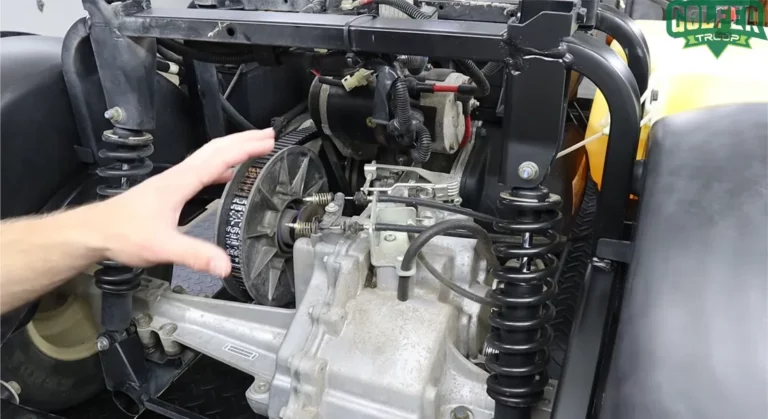
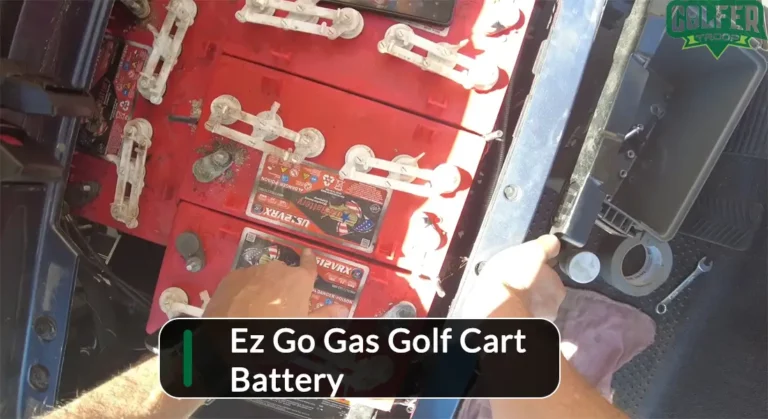
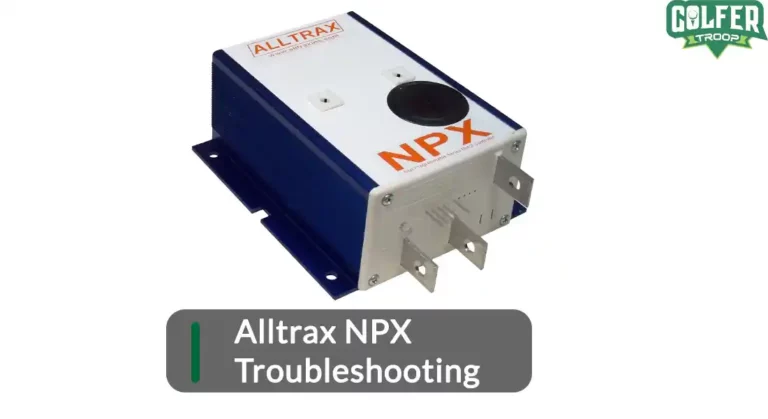
![6 Most Common Club Car XRT 1550 Problems [Easy Solution]](https://www.golfertroop.com/wp-content/uploads/2022/08/Common-Club-Car-XRT-1550-Problems-768x419.webp)
![How to Do Ez go Golf Cart Charger Troubleshooting? [With Easy Solutions]](https://www.golfertroop.com/wp-content/uploads/2023/08/How-to-Do-Ez-go-Golf-Cart-Charger-Troubleshooting-768x419.png)
